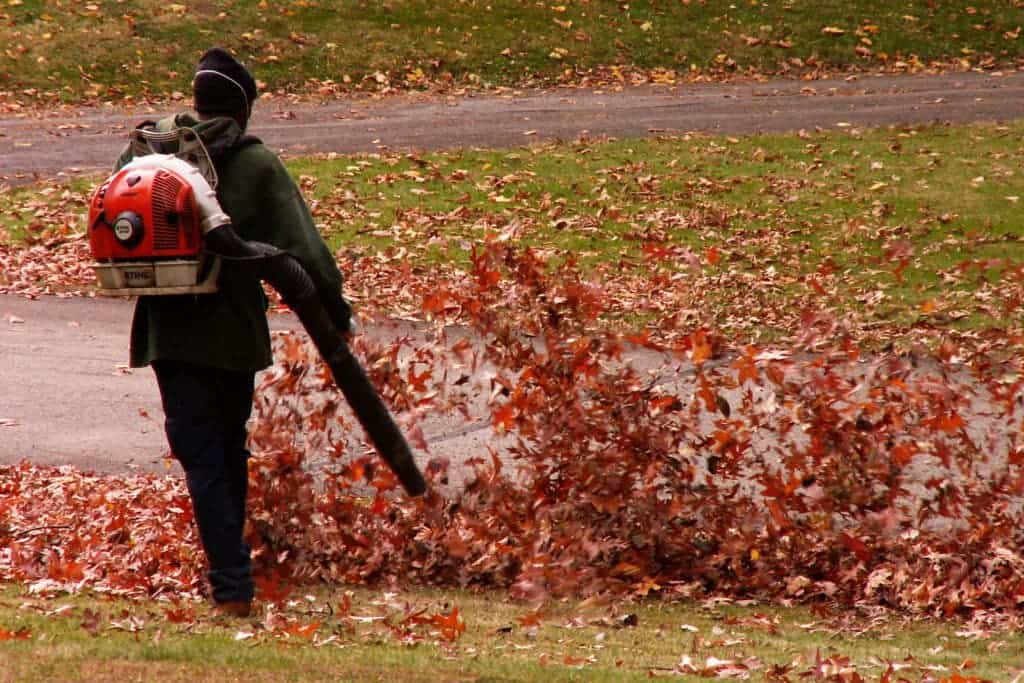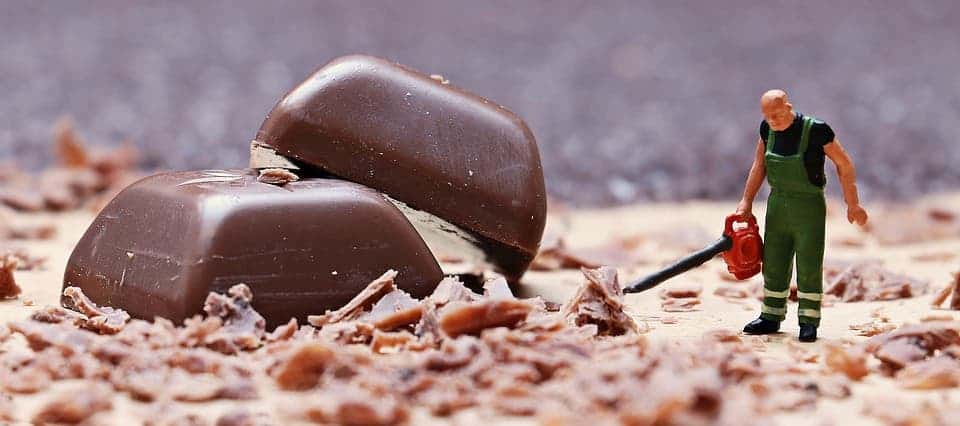The seemingly-innocuous leaf blower may actually cause a lot more damage than you’d think — to both your health and the climate.

Image via Wikimedia.
It’s that time of the year: trees are shedding their leaves, and people are blowing them off the pavement. According to the Centers for Disease Control and Prevention (CDC), this quaint image actually hides several health concerns for operators and the public at large.
The inefficient gas engines typically used on leaf blowers generate large amounts of air pollution and particulate matter. The noise they generate can lead to serious hearing problems, including permanent hearing loss, according to the CDC.
Sounds bad
Some noise may not seem like much of an issue, but the dose can make it poison. The CDC explains that using your conventional, commercial (and gas-powered) leaf-blower for two hours has an adverse impact on your hearing. Some emit between 80 and 85 decibels (dB) while in use. Most cheap or mid-range leaf blowers, however, can expose users to up to 112 decibels (a plane taking off generates 105 decibels). At this level, they can cause instant “pain and ear injury,” with “hearing loss possible in less than [2 to] 5 minutes”.
The low-frequency sound they emit fades slowly over long distances or through building walls. Even at 800 meters away, a conventional leaf blower is still over the 55 dB limit considered safe by the World Health Organization, according to one 2017 study. Because they’re so loud, they can be heard “many homes away” from where they are being used, Quartz explains.
This ties into the greater issue of noise pollution. The 2016 Greater Boston Noise Report (link plays audio,) which surveyed 1,050 residents across the Boston area, found that most felt they “could not control noise or get away from it,” with leaf blowers being a major source of noise. Some 79% of responders said they believed no one cared that it bothered them. Leaf blowers are also seeing more use — in some cases becoming a daily occurrence. As homeowners and landscaping crews create an overlap of noise, these devices can be heard for several hours a day.

With over 11 million leaf blowers in the U.S. as of 2018, this adds up to a lot of annoyed people. Most cities don’t have legislation in place that deals with leaf blower noise specifically, and existing noise ordinances are practically unenforceable for these devices. However, there are cities across the U.S. that have some kind of leaf blower noise restrictions in place or going into effect.
Noisy environments can cause both mental and physical health complications, contributing to tinnitus, hypertension, and generating stress (which leads to annoyance and disturbed sleep).
Very polluting
A report published by the California Environmental Protection Agency (CalEPA) in the year 2000 lists several potential hazards regarding air quality when using leaf blowers:
- Particulate Matter (PM): “Particles of 10 Fm and smaller are inhalable and able to deposit and remain on airway surfaces,” the study explains, while “smaller particles (2.5 Fm or less) are able to penetrate deep into the lungs and move into intercellular spaces.” More on the health impact of PM here.
- Carbon Monoxide: a gas that binds to the hemoglobin protein in our red blood cells. This prevents the cell from ‘loading’ oxygen or carbon dioxide — essentially preventing respiration.
- Unburned fuel: toxic compounds from gasoline that leak in the air, either through evaporation or due to incomplete combustion in the engine. Several of these compounds are probable carcinogens and are known irritants for eyes, skin, and the respiratory tract.
To give you an idea of the levels of exposure involved here, the study explains that landscape workers running a leaf blower are exposed to ten times more ultra-fine particles than someone standing next to a busy road.
Additionally, these tools are important sources of smog-forming compounds. It’s not a serious issue right now, but as more people buy and use leaf blowers, lawnmowers, and other small gas-powered engines, these are expected to overtake cars as the leading cause of smog in the United States.
What to do about it
Well, the easiest option is to use a rake — or just leave the leaves where they are, which is healthier for the environment.
But leaf blowers didn’t get to where they are today because people like to rake. Electrical versions, either corded or battery-powered, would address the air quality and virtually all of the noise concerns (albeit in exchange for less power).
While government regulation might help with emission levels, noise concerns might best be dealt with using more social approaches. Establishing neighborhood-wide leaf blowing intervals, or limiting the activity to a single day per week, would help make our lives a little better. As an added benefit, this would also help people feel that their concerns are being heard, and foster a sense of community.


